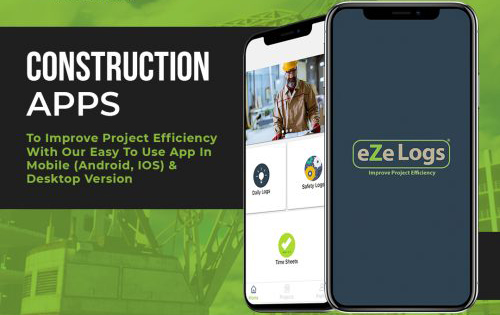In the fast-paced world of construction, staying ahead requires more than just traditional project management techniques. Innovative management solutions are reshaping how construction projects are planned, executed, and completed. These solutions leverage new technologies and methodologies to enhance efficiency, reduce costs, and improve project outcomes.

Here’s a look at some of the cutting-edge strategies and tools transforming construction management.
The Need for Innovative Management Solutions
Traditional construction management approaches often struggle with challenges such as delays, budget overruns, and communication breakdowns. Innovative management solutions address these issues by introducing advanced tools and methodologies that streamline processes and improve overall project performance.
- Complexity Management: Construction projects are becoming increasingly complex, involving multiple stakeholders, intricate designs, and tight deadlines. Innovative management solutions provide tools to handle this complexity, ensuring that all aspects of the project are effectively coordinated.
- Efficiency and Productivity: Traditional methods may not always optimize resource allocation and workflow. Innovative solutions focus on enhancing efficiency and productivity by automating processes, improving communication, and providing real-time data for decision-making.
- Risk Mitigation: Managing risks is a critical aspect of construction project management. Innovative approaches offer new ways to identify, assess, and mitigate risks, reducing the likelihood of project delays and cost overruns.
Innovative Management Solutions in Construction
Several innovative management solutions are making significant impacts in the construction industry. These solutions range from advanced software tools to new project management methodologies.
Building Information Modeling (BIM)
BIM is a digital representation of a building’s physical and functional characteristics. It enables comprehensive planning, design, and construction management through a shared model accessible by all stakeholders.
- Collaborative Design: BIM allows for collaborative design and planning by integrating input from architects, engineers, and contractors into a single model. This collaboration reduces errors, conflicts, and rework by providing a clear visualization of the project.
- Clash Detection: BIM software includes clash detection tools that identify potential conflicts between different systems, such as plumbing and electrical. Early detection of these clashes prevents costly changes during construction.
- Project Lifecycle Management: BIM supports the entire project lifecycle, from design through construction and maintenance. This holistic view enhances coordination and ensures that all phases of the project are aligned with the initial vision.
Project Management Software
Modern project management software offers advanced features for planning, tracking, and managing construction projects. These tools help streamline various aspects of project management, from scheduling to budgeting.
- Real-Time Tracking: Project management software provides real-time tracking of project progress, enabling managers to monitor performance, identify issues, and make informed decisions. This visibility helps in maintaining control over timelines and budgets.
- Resource Allocation: Effective resource management is crucial for project success. Project management tools allow for efficient allocation of resources, including labor, materials, and equipment, ensuring that they are used effectively and reducing waste.
- Document Management: Managing project documentation can be cumbersome. Advanced software solutions offer centralized document management, making it easier to store, access, and share project documents, drawings, and reports.
Drones and Aerial Imaging
Drones equipped with cameras and sensors are revolutionizing site inspections and monitoring. Aerial imaging provides valuable insights into project progress and site conditions.
- Progress Monitoring: Drones can capture high-resolution images and videos of the construction site, allowing managers to monitor progress and compare it with project plans. This helps in identifying deviations and addressing issues promptly.
- Site Analysis: Drones provide detailed aerial views that aid in site analysis, including topographic surveys and volumetric measurements. This information supports accurate planning and decision-making.
- Safety Inspections: Drones can be used for safety inspections, reducing the need for workers to access hazardous areas. This enhances safety and provides a more comprehensive view of site conditions.
Modular Construction and Prefabrication
Modular construction and prefabrication involve the off-site manufacturing of building components that are assembled on-site. This approach offers several advantages in streamlining construction projects.
- Faster Construction: By manufacturing components in a controlled environment, modular construction reduces on-site construction time. Components are delivered to the site ready for assembly, accelerating project completion.
- Quality Control: Prefabrication allows for better quality control, as components are produced in a factory setting where conditions can be controlled more effectively than on a construction site.
- Cost Efficiency: Modular construction can lead to cost savings by reducing labor costs, minimizing material waste, and shortening project timelines. The efficiency of this approach translates into lower overall project costs.
Implementing Innovative Management Solutions
Integrating innovative management solutions into construction projects requires careful planning and execution. Here are key considerations for successful implementation:
- Evaluate Needs and Objectives: Assess the specific needs and objectives of your project to determine which innovative solutions are most applicable. Consider factors such as project size, complexity, and budget when selecting tools and methodologies.
- Invest in Training: Ensure that your team is trained in using new technologies and methods. Proper training is essential for maximizing the benefits of innovative solutions and ensuring that all stakeholders can effectively utilize the tools provided.
- Monitor and Adapt: Continuously monitor the performance of innovative management solutions and be prepared to adapt as needed. Regular evaluations and feedback can help identify areas for improvement and ensure that the solutions are delivering the desired results.
Challenges and Considerations
While innovative management solutions offer numerous benefits, they also present challenges that need to be addressed.
- Integration with Existing Systems: Integrating new technologies with existing systems and processes can be complex. Ensure that innovative solutions are compatible with current workflows and that any necessary adjustments are made.
- Cost of Implementation: The initial cost of implementing innovative solutions can be significant. Weigh the potential benefits against the costs to determine the return on investment and ensure that the solutions align with your budget.
- Change Management: Adopting new methods and technologies requires effective change management. Address any resistance to change by communicating the benefits and providing support throughout the transition process.
By embracing innovative management solutions, construction projects can achieve higher efficiency, better quality, and improved overall performance. Leveraging advanced tools and methodologies enables project teams to navigate the complexities of modern construction and deliver successful outcomes.


